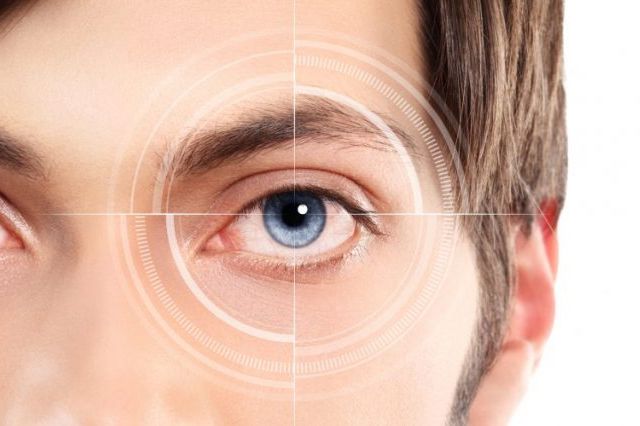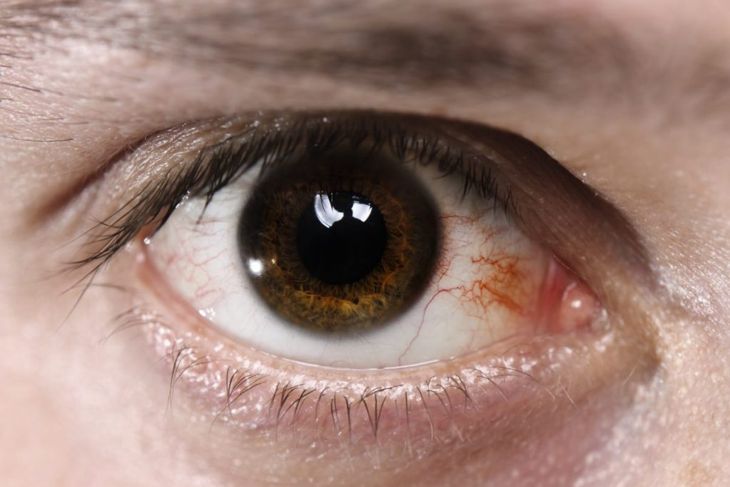Keeping eyes and vision in good condition goes hand in hand with general good health. Diet and overall health status can have unexpected effects on eyesight. Many conditions, including autoimmune and neurological disorders, can cause visual disturbance or even complete loss of eyesight. Some common illnesses can also impact vision. Receiving prompt diagnosis and treatment for these illnesses is important to preventing total or partial blindness.
High Blood Pressure
Along with various other health problems, high blood pressure can affect vision and cause a type of eye disease called hypertensive retinopathy. This condition can damage the blood vessels in the retina and cause bleeding. The retina is the region at the back of the eye responsible for focusing images. High blood pressure can also cause the macula and optic nerve to become swollen. Many people with mild hypertensive retinopathy have no symptoms — doctors often discover the condition during routine eye exams. However, people with more advanced hypertensive retinopathy may complain of blurred vision or even vision loss. The best way to manage the condition is to keep blood pressure under control.
Shingles
The chickenpox virus causes shingles. It causes a very painful, blistered rash to develop on the skin. In some cases, this rash can develop on the face and around the eyes, leading to swelling within the eye. People with shingles around their eyes often experience blurred vision and sensitivity to light. The condition requires prompt treatment with antiviral drugs. Otherwise, the eye may become permanently scarred. Shingles in the eye can also cause glaucoma, which damages the optic nerve.
Multiple Sclerosis
Often, visual disturbances are one of the first signs that a person has multiple sclerosis (MS). Multiple sclerosis is a lifelong condition affecting the brain and spinal cord. People with MS can develop a condition called optical neuritis. An inflamed optic nerve can cause blurred vision or even complete sight loss. However, this is often temporary. MS can also cause problems with eye movement which, if out of alignment, can cause double vision. Some people also experience involuntary eye movements that make objects appear to wiggle or jerk.
Liver Disease
One symptom of liver disease is dry or itchy eyes. It can also cause fatty lumps to develop on the eyelids. Visual problems associated with liver disease include blurred vision and floaters, which appear as spots or strings that move across a person’s field of vision or remain stationary. If a liver condition goes untreated, this can lead to more serious problems with the eyes, including long-term damage to the lens and cornea.
Measles
Measles is an uncommon childhood illness these days, as more and more children receive vaccinations. However, some cases still occur. In countries where most children remain unvaccinated, measles is a leading cause of childhood blindness. Almost all children with measles develop conjunctivitis. Measles can also cause keratitis, which is a corneal infection that causes temporary blurred vision. Left untreated, ulcers and scarring can develop on the cornea, causing permanent vision loss. In rare cases, measles can cause optic neuritis — inflammation of the optic nerve potentially leading to vision loss.
Lyme Disease
Lyme disease is a bacterial infection spread to humans by ticks. Along with a rash and other symptoms, the disease can affect vision because the bacteria can affect the brain’s visual imaging capabilities. Visual disturbances associated with Lyme disease are varied. Many people experience blurred or double vision, and they may be affected constantly, or only while carrying out activities such as reading. The condition can also cause sensitivity to light.
Diabetes
Diabetes is a lifelong condition that makes people unable to produce sufficient insulin, leading to problems controlling blood sugar levels. The condition can cause a complication called diabetic retinopathy. High blood sugar levels can damage the blood vessels in the eye. This reaction is more likely to occur if the person also has high blood pressure. Diabetic retinopathy can cause floaters, blurred vision, and complete vision loss. Some people may also experience black spots in their vision. The condition is often treatable if caught early.
Lupus
Lupus is a disease that causes the body’s immune system to attack healthy tissue. It also causes inflammation and swelling, which can affect the eyes. Lupus can cause a condition called retinal vasculitis that reduces blood flow to the retina and can cause blood and fluid to leak into the retina or the macula. The person may then experience loss of their central vision. Scleritis, inflammation of the white area of the eye (the sclera) can also occur. This can cause blurred vision and light sensitivity. Occasionally, a person with lupus may develop optic neuritis, an inflammation of the optic nerve that can cause vision loss.
Uveitis
Uveitis is an autoimmune disorder that affects the colored region of the eye — the iris. Some people have uveitis on its own, although it often occurs alongside other autoimmune disorders. It can also affect the middle region of the eye. Uveitis causes inflammation and, as such, people with the disorder often experience disturbed vision. The most common visual symptoms of the condition are floaters and blurred eyesight.
Rheumatoid Arthritis
Rheumatoid arthritis causes chronic inflammation. This usually occurs in the joint, but it can also cause extreme dryness of the eyes which can, in turn, damage the cornea. In rare cases, the condition can lead to scleritis, where the white part of the eye becomes inflamed and painful. Severe dry eyes often lead to blurred vision. Scleritis associated with rheumatoid arthritis can also cause blurred vision and sensitivity to light.

 Home
Home Health
Health Diet & Nutrition
Diet & Nutrition Living Well
Living Well More
More




















